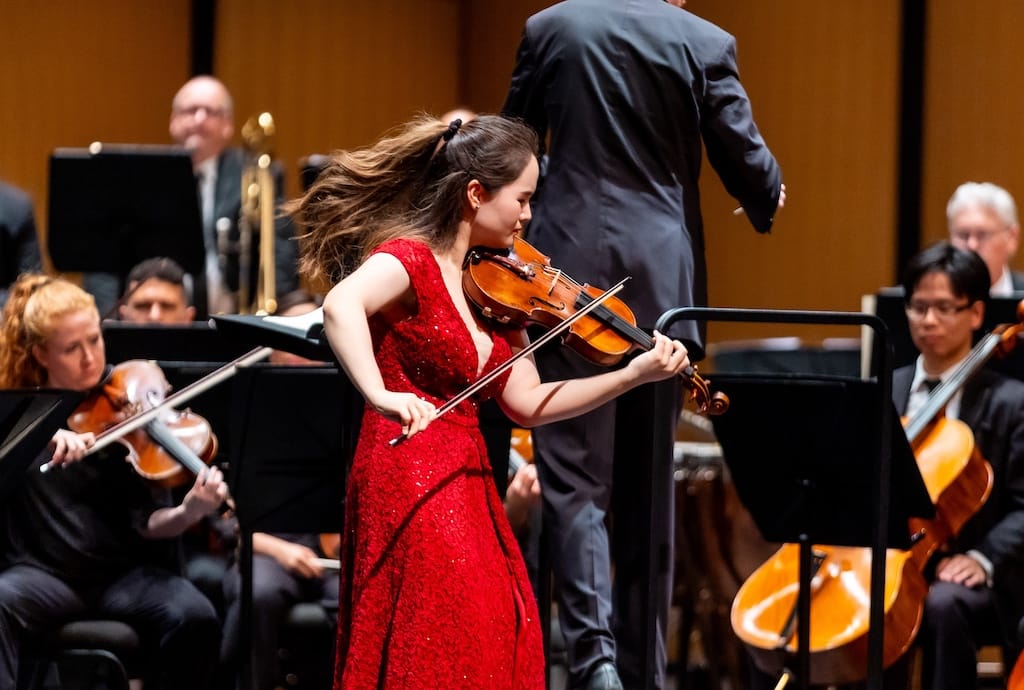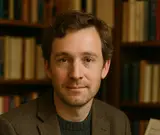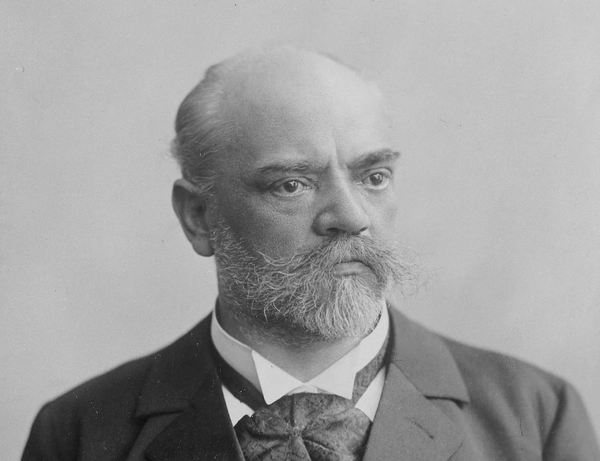The Development of the Classical Concerto – From Baroque to Beethoven
Explore the evolution of the classical concerto, from Baroque beginnings to the refined works of Mozart, Haydn and Beethoven, tracing how form, style and soloistic expression transformed Western classical music.

The concerto, as a musical form, occupies a singular place in Western art music. From its origins in the Baroque era to its blossoming in the Classical period—and beyond—it has served as a showcase for technical virtuosity, expressive dialogue between soloist and ensemble, and the very evolution of musical style. This article traces the concerto’s development, examining key innovations, composers, and works that shaped its course, with particular emphasis on the Classical era’s defining contributions.
From Baroque Roots to the Emergence of the Concerto
The term “concerto” derives from the Italian “concertare,” meaning “to agree” or “to contend.” In the early Baroque (circa 1600–1650), composers began to experiment with contrasting forces—voices against instruments, solo instruments against ensemble—giving rise to early concertato forms. Monteverdi’s Vespers (1610) and later sacred works illustrate this practice in vocal music. Instrumental music soon adopted the same spirit: small groups of instruments (concertino) were set against a larger ensemble (ripieno), forming the “concerto grosso.” Corelli’s Opus 6 (1690), a set of twelve concerti grossi, codified the format: two violins and cello forming the concertino, with ripieno strings and continuo supplying the orchestral backdrop. These works demonstrated the dramatic interplay between soloists and ensemble, often structured in a three-movement pattern (fast–slow–fast).
Parallel to the concerto grosso, composers such as Vivaldi pioneered the solo concerto. Vivaldi’s published collections—L’estro armonico (Op. 3, 1711), La stravaganza (Op. 4, 1714), and others—offered countless solo-instrument concertos (notably for violin), structured typically in three movements with ritornello form: recurring orchestral passages (ritornelli) framing virtuosic solo episodes. In these works, the soloist’s dialogues with the ensemble reveal technical flair alongside melodic inventiveness. Vivaldi’s concertos began to appear across Europe, influencing composers in Germany, France and England. Johann Sebastian Bach, for instance, transcribed several of Vivaldi’s violin concertos for keyboard, thereby internalising the Italian concerto’s idioms within his own solo harpsichord and organ works.
By mid-eighteenth century, the concerto grosso gradually fell out of fashion, supplanted by the solo concerto’s popularity. Audiences grew enthralled by the charismatic soloist and the thrilling display of instrumental prowess.
The Early Classical Concerto
As the Baroque gave way to the early Classical period (c. 1740–1780), the concerto underwent significant transformation. The continuo was abandoned; orchestras expanded, embracing wind instruments (flutes, oboes, horns) alongside strings. The three-movement structure endured, but composers began to refine form: the first movement often adopted sonata-form—or a nascent hybrid between ritornello and sonata principles—rather than the purely ritornello-based approach of Vivaldi.
Carl Philipp Emanuel Bach (1714–1788), J. S. Bach’s second son, occupies a pivotal position. His keyboard concertos (H. 246–379, composed 1740s–1760s) embrace a more expressive, empfindsamer Stil—“sensitive style”—with sudden harmonic shifts, unexpected suspensions, and virtuosic demands on the soloist. In these concertos, the dialogue between solo keyboard and orchestra grows more conversational: themes introduced by the ensemble are taken up, varied and embellished by the soloist; the soloist’s cadenzas (often improvised) become momentary centres of attention.
Similarly, François-Joseph Gossec and Johann Christian Bach (1735–1782) contributed to the development of the concerto in Northern Europe. Johann Christian, often called the “London Bach,” composed over twenty keyboard concertos that synthesised Italianate flair with fashionable London style, thereby influencing young Wolfgang Amadeus Mozart.
Mozart and the Consolidation of the Classical Concerto
Wolfgang Amadeus Mozart (1756–1791) stands at the heart of the Classical concerto tradition. Composing his first piano concertos as a child prodigy (circa 1767–1770), Mozart’s early works reveal a precocious mastery of form and expressive nuance. Yet it was during his Vienna years (1781–1791) that his mature piano concertos—numbered K. 449, 450, 453, 456, 459, 467 and 488–491—attained unparalleled artistry. These concertos consistently employ a three-movement design (Allegro–Andante/Adagio–Allegro vivace or Rondo), with first movements in sonata-rondo form: orchestral exposition of principal themes, followed by solo entry which restates and elaborates them, alternating with developmental episodes and orchestral tutti passages. The slow movements—often binary or sonata-in-small-form—display serene lyricism; the finales, frequently set as rondos, offer buoyant, dance-like energy.
Mozart’s concertos are remarkable for several reasons:
- Integration of Orchestra and Soloist
Rather than simply showcasing the piano, Mozart weaves solo and ensemble into a symbiotic tapestry. In the first movement of K. 453, for example, the piano does not merely embellish orchestral statements but often introduces its own motifs, engaging the orchestra in playful imitation. The orchestration is lean—two oboes (or flutes), two horns, strings and solo piano—yet it provides a rich palette of colours. - Emphasis on Dialogue and Dramatic Contrast
Each concerto invites the soloist into a dramatic narrative: Mozart composes expressive dialogues, sudden silences, and unexpected modulations that heighten tension. In K. 466, nicknamed the “Jeunehomme,” the opening movement’s minor-key drama and stormy orchestral interjections evoke operatic urgency. - Virtuosic Brio without Excessive Display
While the piano parts demand agility and finesse, virtuosity is always in service of musical substance. The cadenzas—improvised by Mozart himself—enhance rather than eclipse thematic development. Audiences were enthralled by both the soloist’s flourish and the concerto’s architectural coherence.
Mozart also wrote concertos for other solo instruments: five violin concertos (K. 207, 211–215) dating from 1775, two flute and harp concerto (K. 299, 381), and concertos for clarinet (K. 622), oboe (K. 314), bassoon (K. 191), and horn (K. 447). These works similarly balance soloistic brilliance with expressive depth: the Clarinet Concerto in A major’s warm, autumnal colour and effortless lyricism stand as models of wind-instrument concerto writing.
Haydn’s Orchestral Concertos and the Classical Concerto Idiom
Joseph Haydn (1732–1809), Mozart’s friend and elder, contributed to the concerto repertoire more sparingly. His known concertos include the Cello Concerto in C major (Hob. VIIb:1, c. 1761–65), the C major piano concerto (Hob. XVIII:3, c. 1780–81), and the D major Cello Concerto (Hob. VIIb:2, 1783–85). Haydn’s concertos tend to emphasise structural clarity and motivic consistency.
In the Cello Concerto in D major, the first movement’s opening theme, stated by solo cello, is echoed and elaborated by the orchestra, demonstrating a growing equality between soloist and ensemble. The slow movements exhibit Haydn’s gift for graceful melody, while the finales sparkle with rhythmic vitality. Though Haydn’s concertos never achieved the popularity of his symphonies or string quartets, they anticipate the concerto conventions that Mozart would fully realise.
Beethoven and the Transformation of the Concerto
Ludwig van Beethoven (1770–1827) stands at the threshold between the Classical and Romantic eras. His five piano concertos—beginning with Piano Concerto No. 1 in C major, Op. 15 (1795–98), through to Piano Concerto No. 5 in E♭ major, Op. 73, the “Emperor” (1809)—expanded the concerto’s expressive range and technical demands. Beethoven’s concertos often blur the boundary between soloist and orchestra: the first movement of the “Emperor” begins with a bold orchestral flourish, only to be met by an expansive piano entry that transforms the thematic material. Beethoven’s orchestration is more robust—winds, brass, timpani and enlarged strings—enabling dramatic climaxes and sonorous effects. His cadenzas, often written by the composer, are integral to the movement’s structure, rather than mere displays of dexterity.
Beethoven’s Violin Concerto in D major, Op. 61 (1806), also redefined the genre. Because of its symphonic scale and transcendent slow movement, it occupies a unique place: the violin’s lyrical lines soar above a vast orchestral canvas. The concerto’s form is classical in outline, yet Beethoven’s expansive development sections and harmonic explorations foreshadow Romantic concerto writing. Interestingly, this particular violin concerto did not achieve widespread acclaim until the mid-nineteenth century, when Joseph Joachim championed it.
From Classical to Romantic
As the nineteenth century unfolded, the concerto continued to evolve, absorbing Romantic ideals of heightened emotion, national identity, and virtuosity. Felix Mendelssohn’s Violin Concerto in E minor, Op. 64 (1844), exemplifies this shift: the three movements are connected attacca (without pause), creating a continuous narrative; the first movement’s lyrical opening by the soloist establishes an intimate dialogue with the orchestra. Clara Schumann’s Piano Concerto in A minor, Op. 7 (1835), though composed when she was only fourteen, displays early Romantic expressiveness within Classical structures.
The virtuoso era—typified by Nicolò Paganini, Frédéric Chopin, Franz Liszt and others—produced concertos that foregrounded the soloist’s technical wizardry. Chopin’s Piano Concerto No. 1 in E minor, Op. 11 (1830), and Piano Concerto No. 2 in F minor, Op. 21 (1829), blend Polish folk elements with Romantic lyricism; though retained in three movements, they place extreme demands on the soloist.
In Germany, Robert Schumann’s Piano Concerto in A minor, Op. 54 (1845), reflects a more symphonic integration of soloist and orchestra: the piano’s opening gesture, introduced by the orchestra, blossoms into an impassioned duet between soloist and ensemble. In Russia, Pyotr Ilyich Tchaikovsky’s Piano Concerto No. 1 in B♭ minor, Op. 23 (1875), debuted to mixed criticism; its sweeping melodies and virtuosic passages eventually cemented its position as a Romantic staple.
The Concerto’s Continuing Evolution
While this article primarily targets the Classical concerto’s development, it is worth noting that the twentieth century witnessed further reinvention. Stravinsky’s Violin Concerto in D (1931) employs neoclassical principles, combining Baroque textures with modern harmonies.
Shostakovich’s Piano Concerto No. 1 in C minor, Op. 35 (1933), and Piano Concerto No. 2 in F major, Op. 102 (1957), incorporate jazz idioms and sardonic wit, reflecting the composer’s complex relationship with Soviet authorities. Bartók’s Violin Concertos (1938 and 1945) blend folk modalities with modernist dissonance. Each of these works owes a debt to the Classical concerto’s formal clarity, yet expands its expressive possibilities in new directions.
Key Formal Characteristics of the Classical Concerto
To summarise the quintessential features that distinguish the Classical concerto—especially in the works of Mozart, Haydn and Beethoven—it is useful to outline the following:
- Three-Movement Structure
Traditionally fast–slow–fast, with the first movement employing sonata form infused with ritornello elements: orchestral exposition, solo entry, development with alternating tutti and solo passages, recapitulation, and often a cadenza before the final orchestral conclusion. - Role of the Cadence (Cadenza)
The cadenza evolved from an improvised flourish (Baroque era) into a composed virtuosic statement (Classical era). Composers began to write out cadenzas, integrating them seamlessly into the movement’s structure. The cadenza serves to showcase the soloist’s technical and interpretative prowess, while remaining thematically rooted. - Dialogue between Soloist and Orchestra
Unlike the earlier concerto grosso format—where a small concertino group contended with a larger ripieno—the Classical concerto foregrounds a single soloist. Orchestral tutti passages introduce and restate themes; the soloist then assumes centrality, elaborating, varying and sometimes introducing new material. The conversational interplay underscores an egalitarian rapport, rather than a mere backdrop for solo display. - Balanced Orchestration
Orchestras expanded to include oboes (often replaced by flutes in slow movements), horns, sometimes bassoons, and occasionally trumpets and timpani in festive works. However, orchestration remains transparent, ensuring the solo instrument remains clearly audible. This balance exemplifies the Classical ideal of clarity and poise. - Emphasis on Melody and Harmonic Simplicity
Classical concertos favour tuneful melodies, clear harmonic progressions, and economical orchestral textures. While there is virtuosic showmanship, it is tempered by formal discipline and melodic elegance. Even Beethoven’s more expansive concertos retain underlying Classical integrity amid Romantic boldness.
Important Works and Their Significance
- Vivaldi’s L’estro armonico, Op. 3 (1711): Solidified the three-movement solo concerto form and established the ritornello principle which would carry forward into the Classical era.
- C.P.E. Bach’s Keyboard Concertos (1740s–1760s): Bridged Baroque and Classical idioms, introducing expressive nuance and an early variant of sonata form.
- Mozart’s Piano Concertos Nos. 20 and 21 (K. 466 & K. 467, 1785): Demonstrate mature balance between drama (No. 20 in D minor) and lyricism (No. 21 in C major).
- Beethoven’s Piano Concerto No. 5, “Emperor” (Op. 73, 1809): Culminates Classical concerto ideals while foreshadowing Romantic expansiveness.
- Beethoven’s Violin Concerto in D major (Op. 61, 1806): Redefines violin concerto with symphonic breadth and lyrical profundity.
Conclusion
The development of the classical concerto encompasses a remarkable evolution from the Baroque concerti grossi to the refined solo concertos of the Viennese Classical period, and thence into the Romantic and modern eras. Central to this trajectory is the growing emphasis on individual expression, technical brilliance, and formal innovation. In the hands of C.P.E. Bach, Mozart, Haydn and Beethoven, the concerto became more than a mere vehicle for virtuosity: it emerged as a collaborative drama, an interplay of forces that harnessed orchestral resources and soloistic flair in equal measure.





